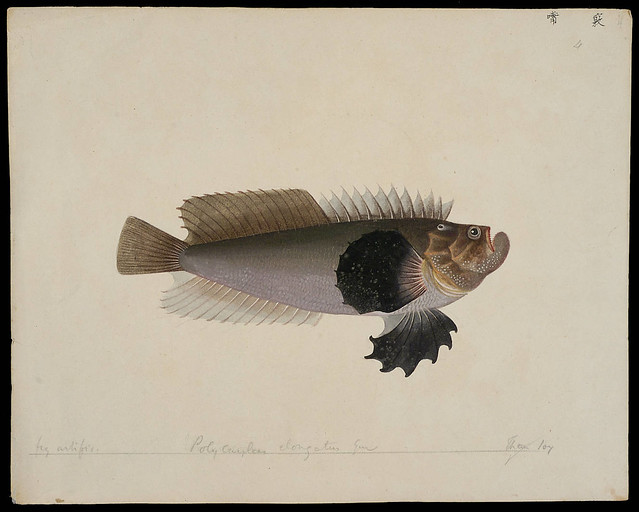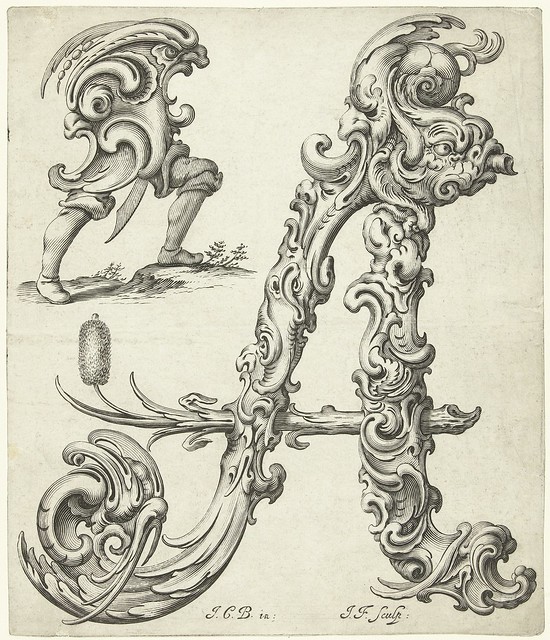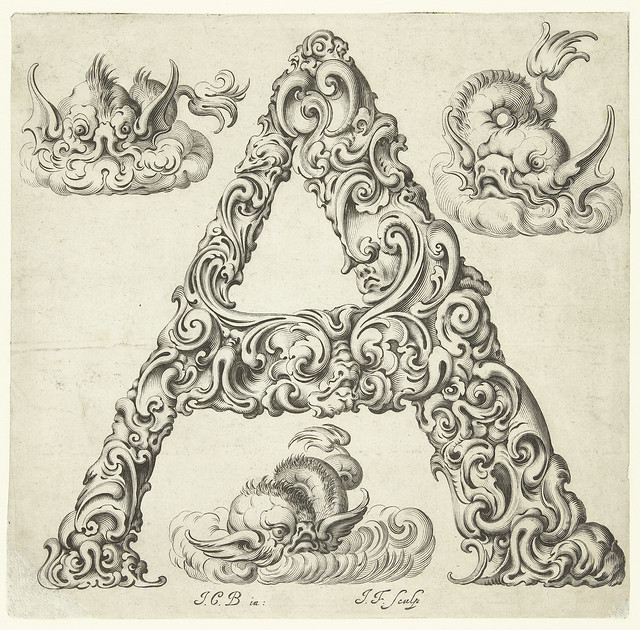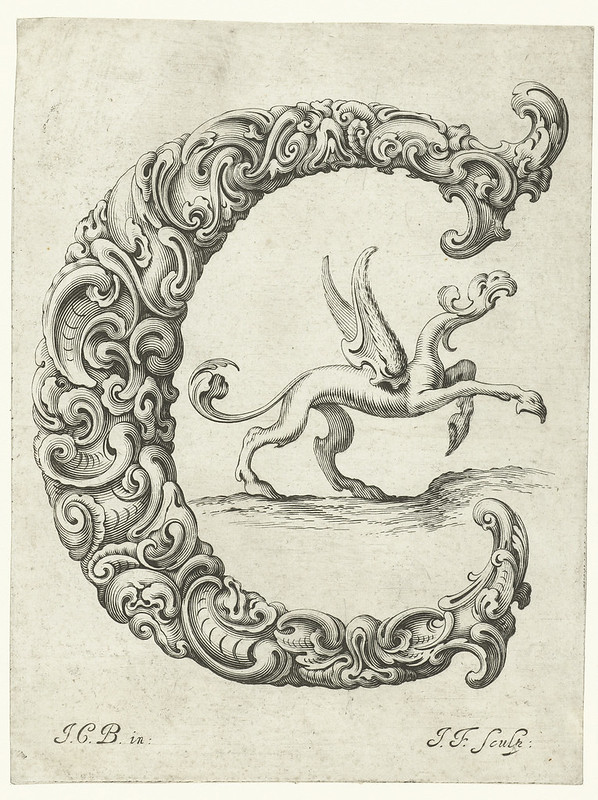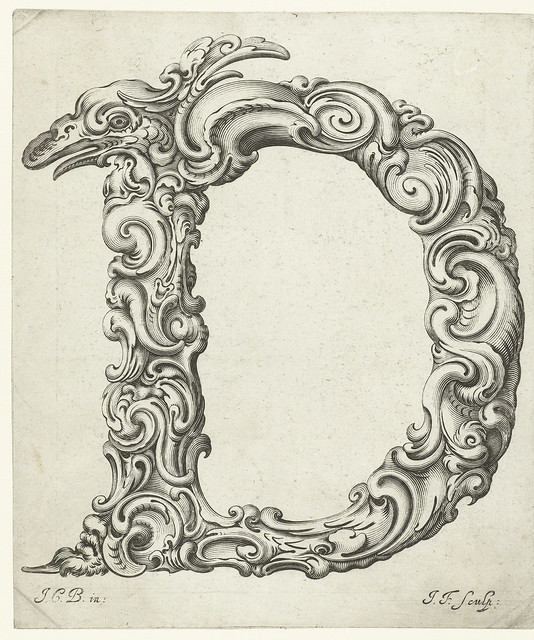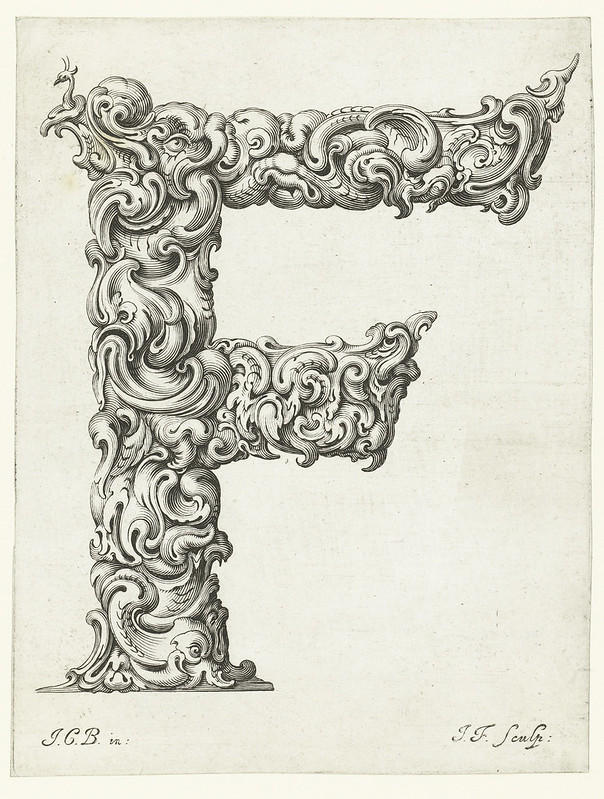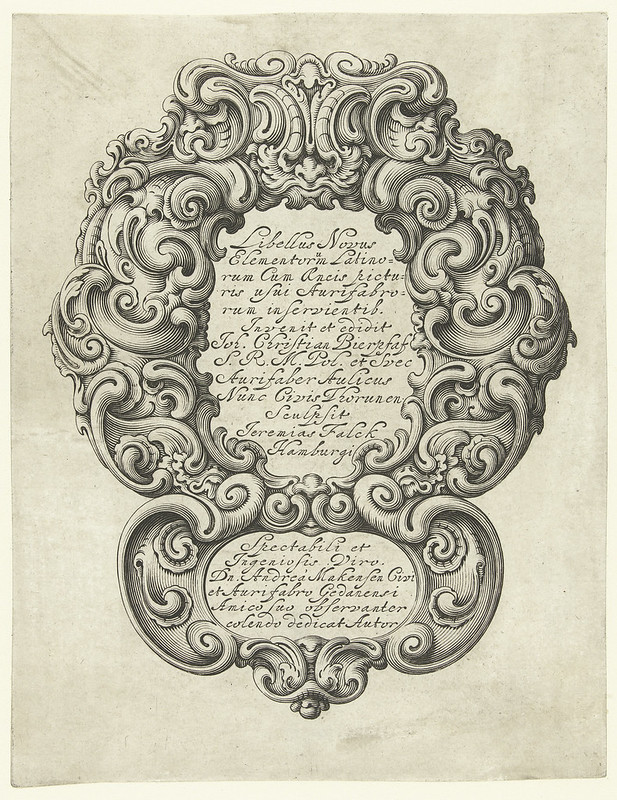All the images in this post have been extensively background cleaned and, although you can click through on each picture below to access much larger versions, Brown U's website hosts very high resolution, large format files.
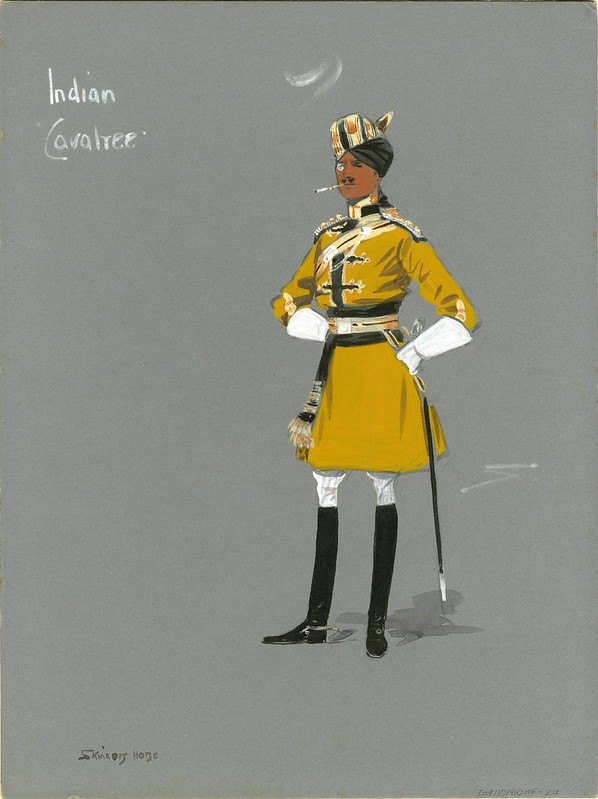
Indian 'Cavalree' Skinners Horse
Date: 1910
Artist: Snaffles
Notes: gouache on grey board; from a pair of semi-caricatures

French Carabinier, I Empire
Date: 1910
Artist: Leopoldo Cenni
Notes: pen/ink drawing measuring about 26 x 20 inches
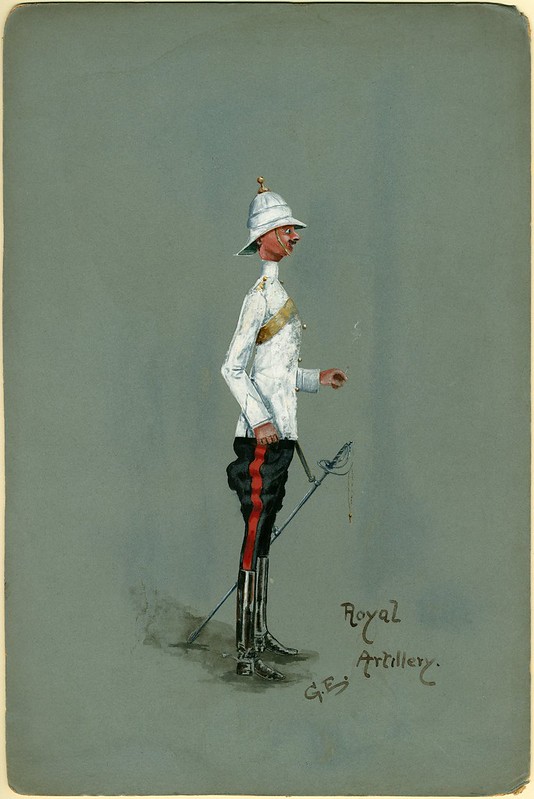
Royal Artillery
Date: 1910
Artist: E., G.
Notes: gouache sketch, soldier decked out in tropical kit
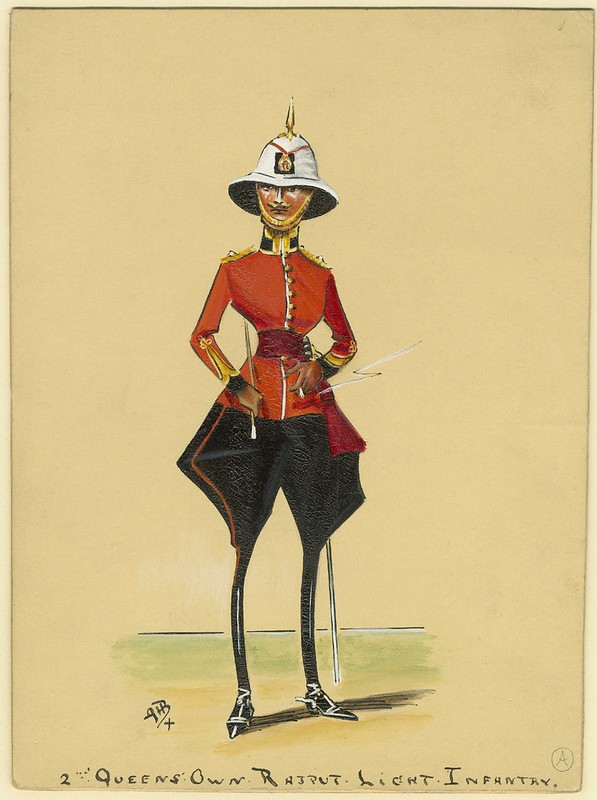
2nd Queen's Own Rajput Light Infantry
Date: 1910
Artist: GH Brennan
Notes: The 2nd Rajput^ was originally established as a Bengal Native Battalion in 1798 and brought under royal authority with the declaration of Queen Victoria as Empress of India in 1876. {from a series of four watercolour sketches}
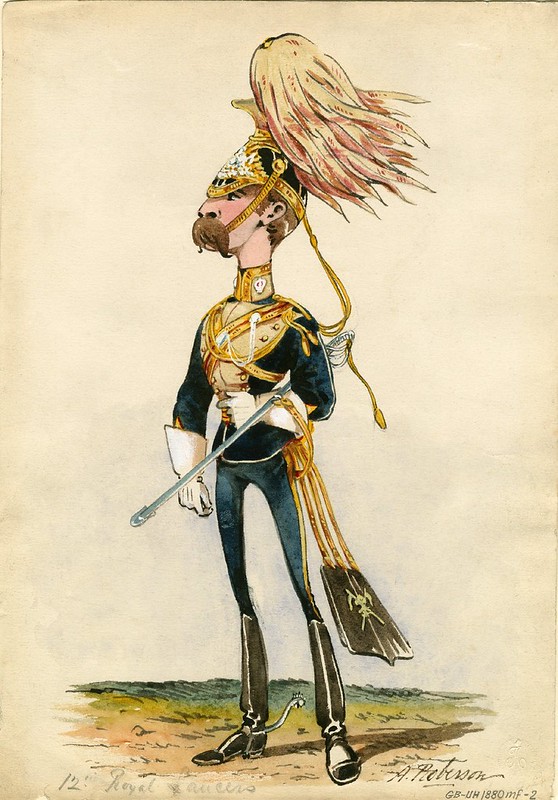
12th (The Prince of Wales's) Royal Lancers. Full dress
Date: 1880 (that's probably the date of the uniform. The artist wasn't active until 1888 and this sketch was most likely produced in the first decade of the 20th century)
Artist: A Roberson
Notes: Formed from a regiment of dragoons^ and bearing the badge of the three ostrich feathers, the 12th Royal Lancers^ were independently operational as a British cavalry regiment from 1715 until 1960.

The Cameronians
Date: 1908
Artist: GH Brennan
Notes: Watercolour and gouache; the unusual texture is from significant paint cracking and flake loss. [The Cameronians^ was a Scottish rifle regiment(1881) in the British Army, with its descendant units disbanded over about the last forty years]

67th South Hampshire Regiment
Date: 1864 (uniform date) 1910 (sketch date)
Artist: GH Brennan
Notes: subjects^ - "soldiers in art" "caricatures and cartoons" "history 19th century" "uniforms"
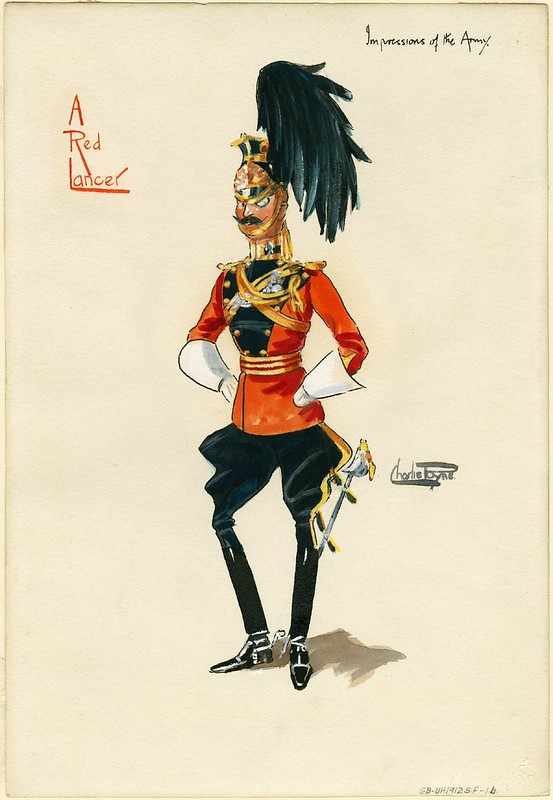
A Red Lancer
Date: 1912
Artist: Charles Johnston Payne (d. 1967)
Notes: from Payne's watercolour sketch series, 'Impressions of the Army' ::::: [W]- "Although the lance had its greatest impact in the charge, lancers were vulnerable against other cavalry, as the lance proved a clumsy and ineffective weapon (compared to the sabre) at close quarters. By the late 19th century, many cavalry regiments were composed of troopers with lances (as well as sabres or other secondary weapons) in the front rank and men with sabres in the second, the lances for the initial shock and sabres for the mêlée."
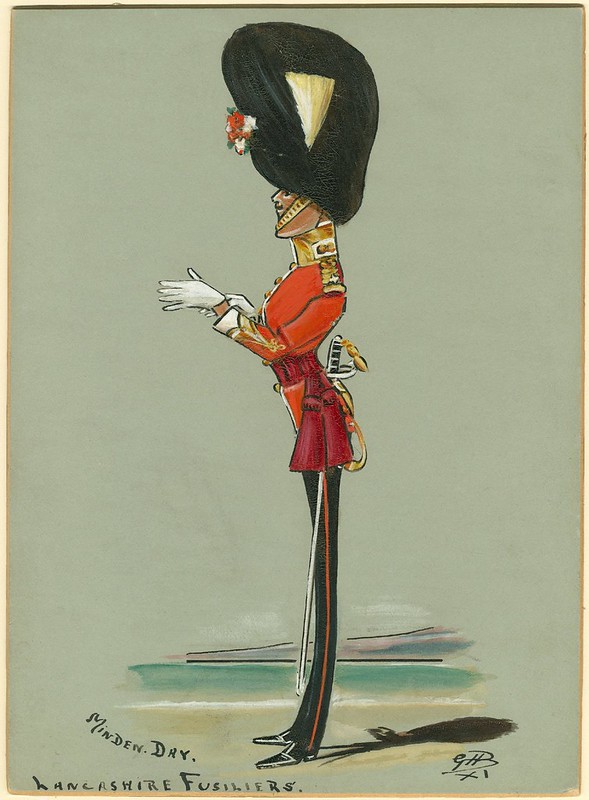
Minden Day - Lancashire Fusiliers
Date: 1908
Artist: GH Brennan
Notes: 3rd (of 5) in an unnamed watercolour series of military personnel caricatures. [W]-"Minden Day is a regimental anniversary celebrated on August 1 by certain units of the British Army. It commemorates the participation of the forerunners of the regiments in the Battle of Minden on that date in 1759. The celebration of the day involves the wearing of "Minden Roses" on the regimental head dress, and, in the case of the infantry regiments, the decoration of the regimental colours with garlands of roses." {MoD}
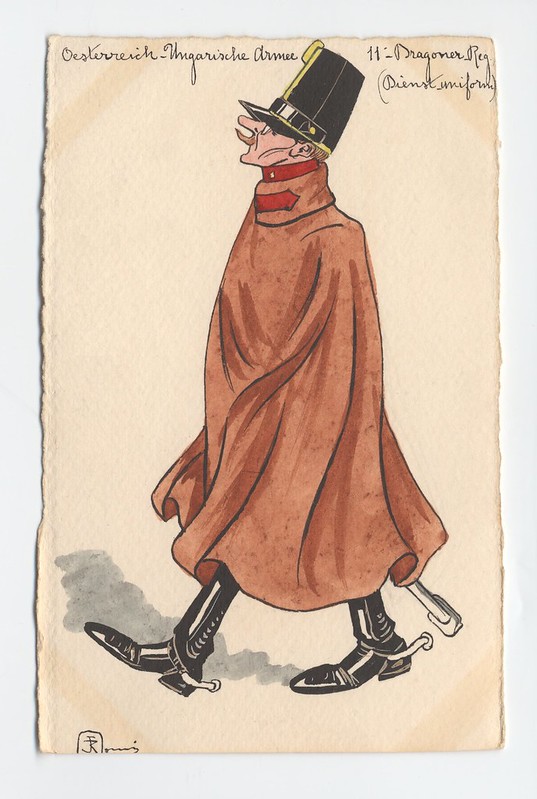
Oesterreich-Ungarische Armee
11o. Dragoner-Reg. (Dienst-uniform)
Date: 1900-1912
Artist: J Ronni
Notes: This cloaked cavalryman sketch is from a group of 120 original caricature illustrations on postcards of Austro-Hungarian military uniforms, which is part of a larger collection of 805 postcards of various national armies.
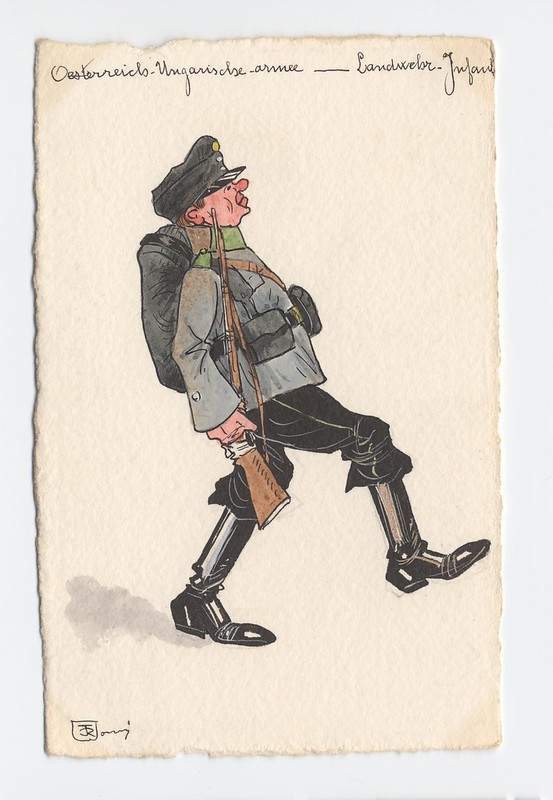
Oesterreich-Ungarische Armee - Landwehr Infantry
Date: 1900-1912
Artist: J Ronni
Notes: Austro-Hungarian infantryman. {From the same caricature series and larger postcard set as above} [reminds me somewhat of Švejk]

Oesterreich-Ungarische Armee Militar-Arzt
Date: 1900-1912
Artist: J Ronni
Notes: {again from the postcard series as above} [incidentally, the slipcase housing the unbound series bears a gold title: "J Ronny, Austrian Uniforms (1900-1912), original watercolour caricatures"]
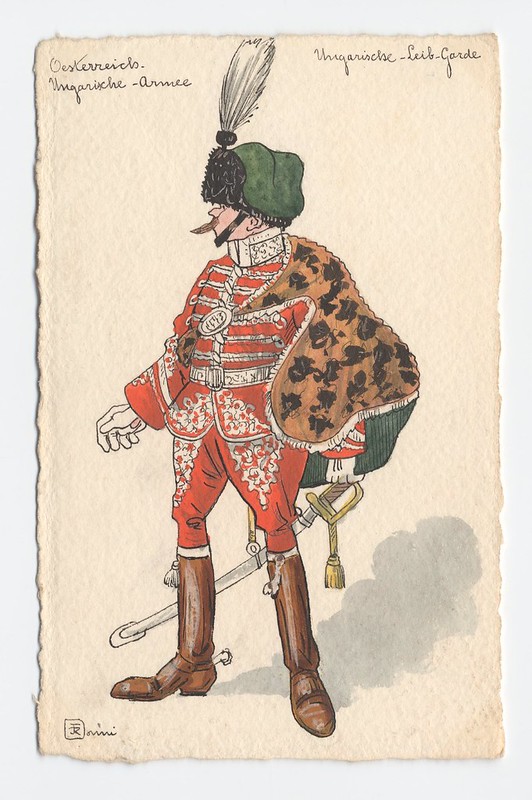
Oesterreich-Ungarische Armee Ungarische-Leib-Garde
Date: 1900-1912
Artist: J Ronni
Notes: An Hungarian Life Guard {again from the postcard series as above} The Austro-Hungarian Land Forces 1848-1918 site aims to "document the organisational history of the land forces of the Austro-Hungarian monarchy from just prior to the outbreak of the Great War until the collapse of the monarchy in 1918."
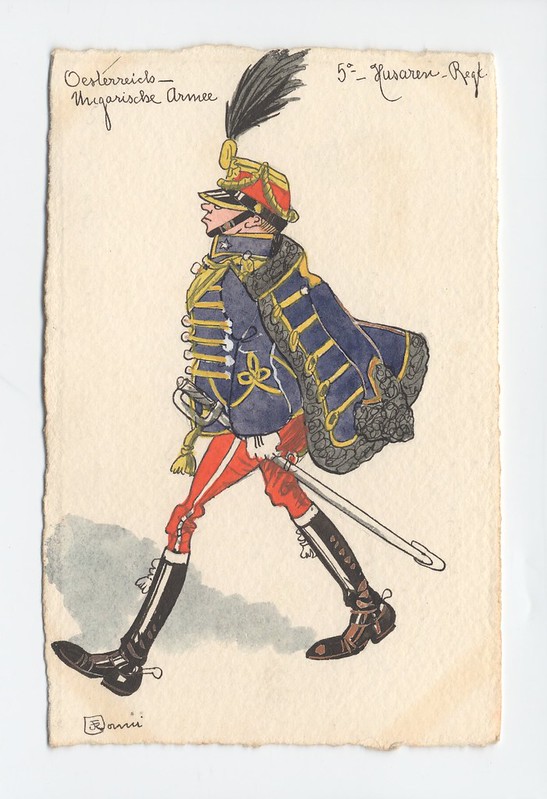
Oesterreich-Ungarische Armee 5o. Husaren-Regt.
Date: 1900-1912
Artist: J Ronni
Notes: Husaren or (more commonly in English) Hussar^ "refers to a number of types of light cavalry which originated in Hungary in the 14th century." {this sketch is, again, from the large postcard series as noted above}

The Oxford Hussars Levée^ dress
Date: 1908
Artist: GH Brennan
Notes: Yeomanry regimental soldier -- One of a collection of 5 watercolors by G.H. Brennan of British soldiers.
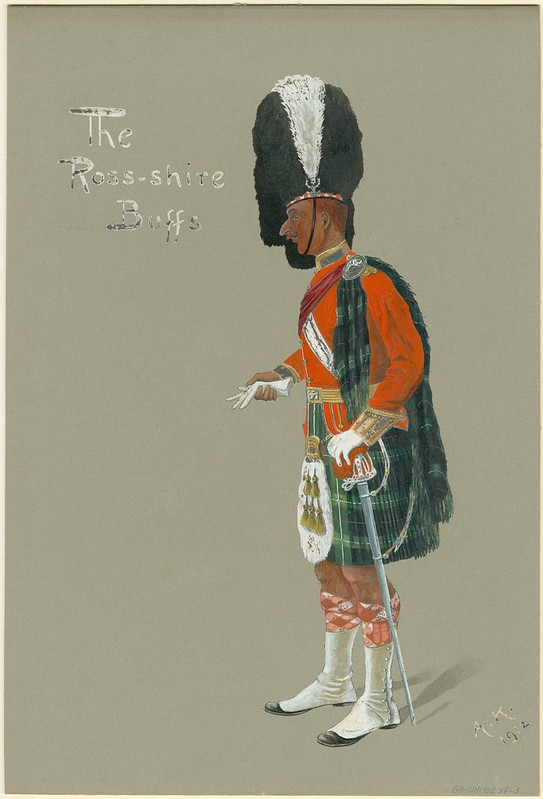
The Ross-Shire Buffs
Date: 1912
Artist: K.,A.
Notes: "Original gouache caricature on gray board, signed and dated by A.K.; standing uniform figure in profile facing left, wearing kilt." The Ross-Shire Buffs^ or "78th Regiment of Foot, was a Highland Infantry Regiment of the Line raised in late 18th Century Scotland for service against the French during the Napoleonic Wars."

The Sand Bags
England's safe from any mob
while men like me are on the job
Date: 1913
Artist: James Walsh
Notes: Front view of Grenadier Guards officer. Originally^ (1656) a regiment of bodyguards for the exiled Charles II, the Grenadiers earned their famous title in 1815 at Waterloo by defeating the Grenadiers of the French Imperial Guard.
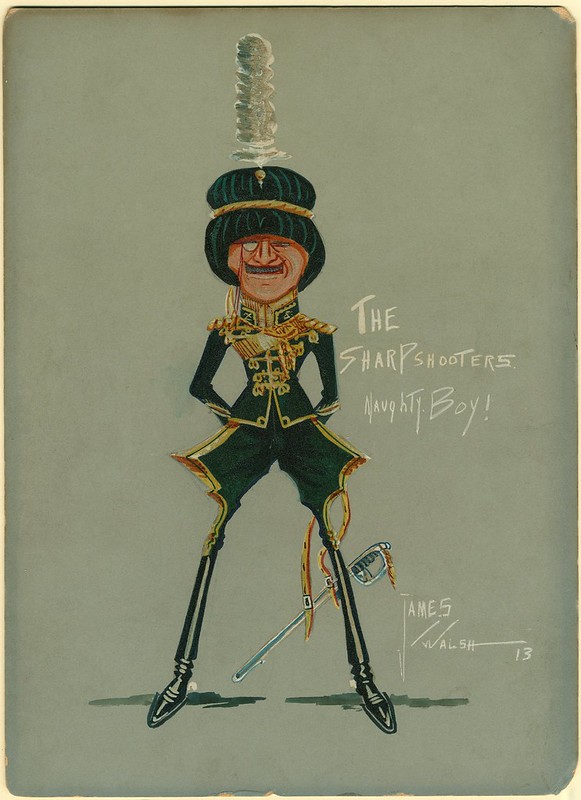
The Sharpshooters Naughty Boy!
Date: 1913
Artist: James Walsh
Notes: Gouache caricature on gray board - a front view of an officer of the 3rd County of London Yeomanry^ (aka Sharpshooters). The first line regiment (1/3rd) was formed in the creation of the Territorial Force^ in 1908 and was based in St John's Wood.
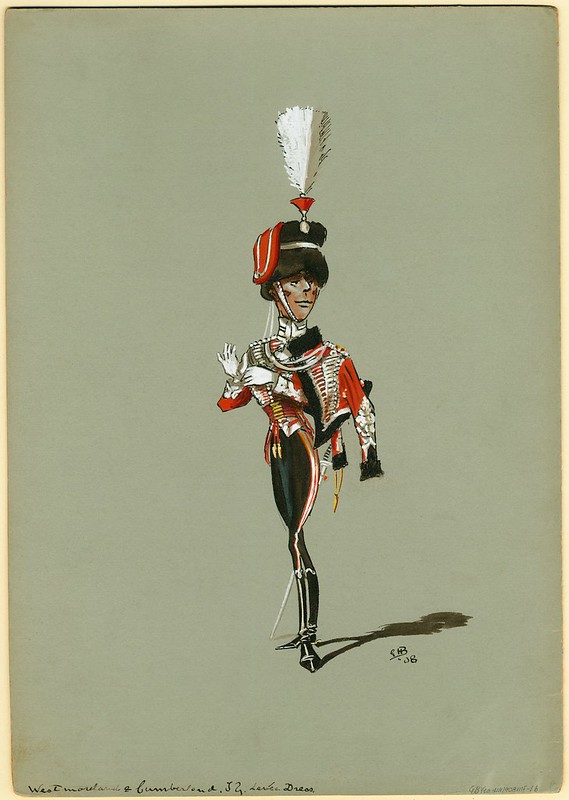
Westmoreland & Cumberland I.Y. Levée Dress
Date: 1908
Artist: GH Brennan
Notes: Another of the collection of 5 watercolour caricatures by Brennan of British soldier figures. The Westmorland & Cumberland Yeomanry regiment was formed after the Territorial and Reserve Forces Act 1907 created a volunteer army in Britain. {Levée Dress refers (I *think*) to the presentation style of uniform (that used to be) worn, according to strict protocols, when carrying out duties as an Equerry to royalty or when attending high status / formal events such as (royal?) court investitures or weddings}

The 18th Tiwana Lancers
Date: 1909
Artist: GH Brennan
Notes: (From a set of four caricatures, signed by the artist) Raised originally in (what is now) Pakistan in the 1850s as a combined Moslem-Sikh outfit, the 18th Tiwana Lancers was brought under the auspices of the Prince of Wales when he visited the region in 1908 but was renamed simply '18th Lancers' with the partition of the sub-continent and Pakistan's becoming a republic in 1947.
All the images above are found among the Prints, Drawings, and Watercolors from the Anne S. K. Brown Military Collection at Brown University.
The selection above is a mere sampling of the images returned for a narrow site search on 'caricature' during the years '1900-1915', as I recall. By September 2011 more than 20,000 items had been digitised from the Military Collection and posted online.
Previously: Military Caricatures -<>- Waiter, there's a Hair in my Satire -<>- Aztec Mexico -<>- Surinam Slave Trade (all derived from the fabulous Brown University holdings). And, generally speaking: combat and costumes.
Follow along at Twitter, Delicious & Pinboard.
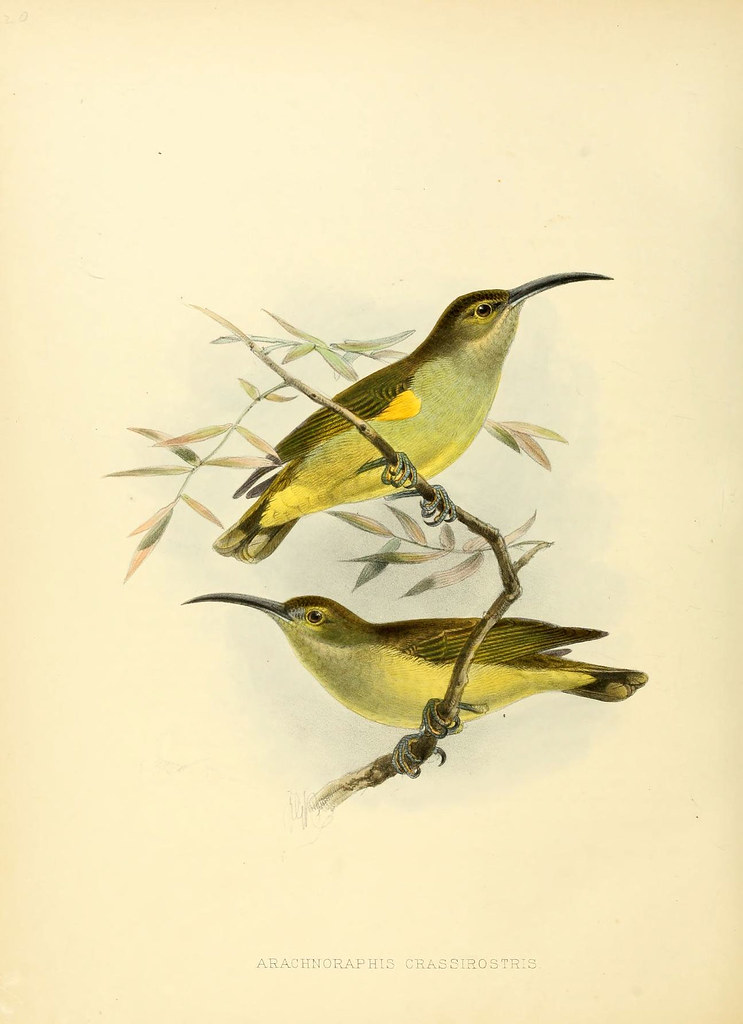
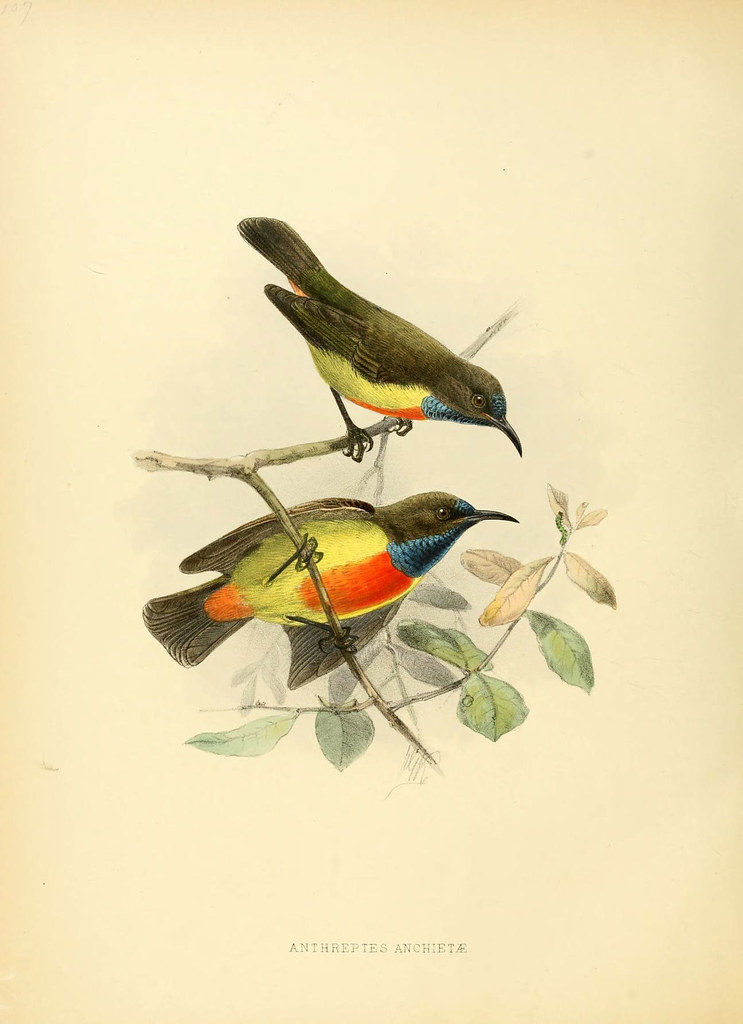
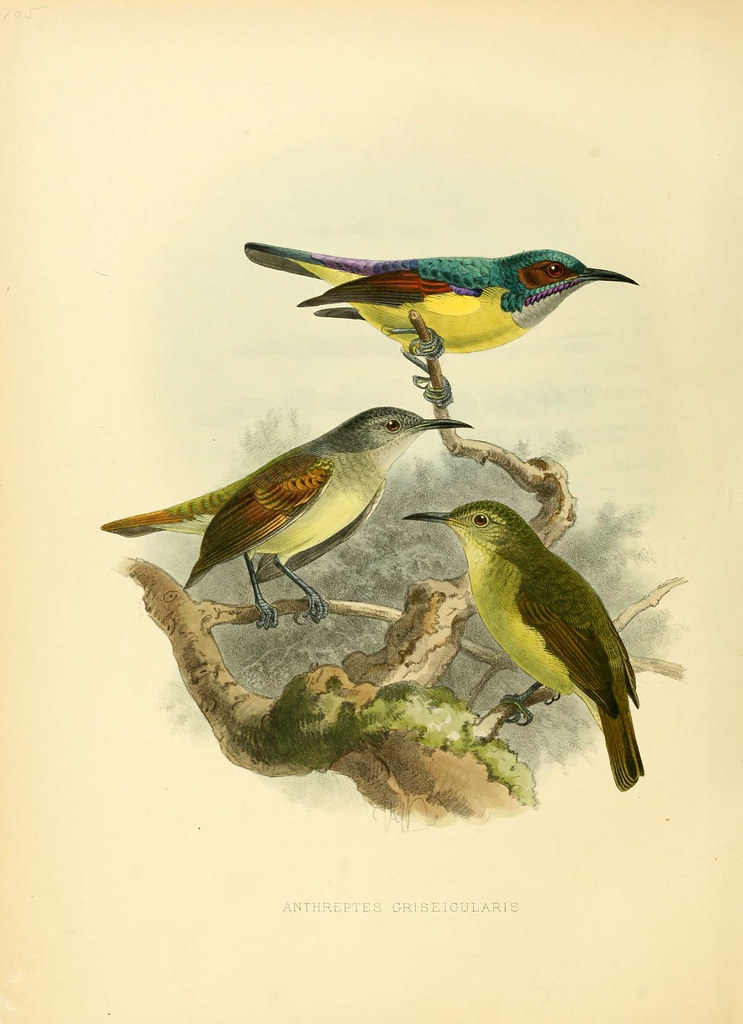
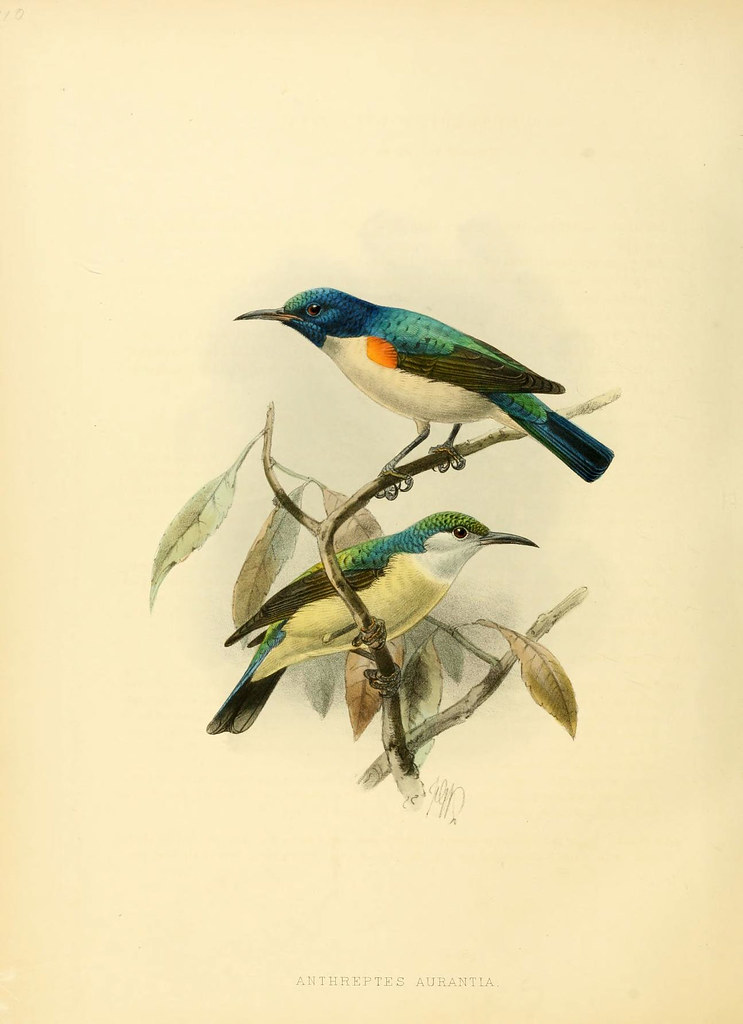
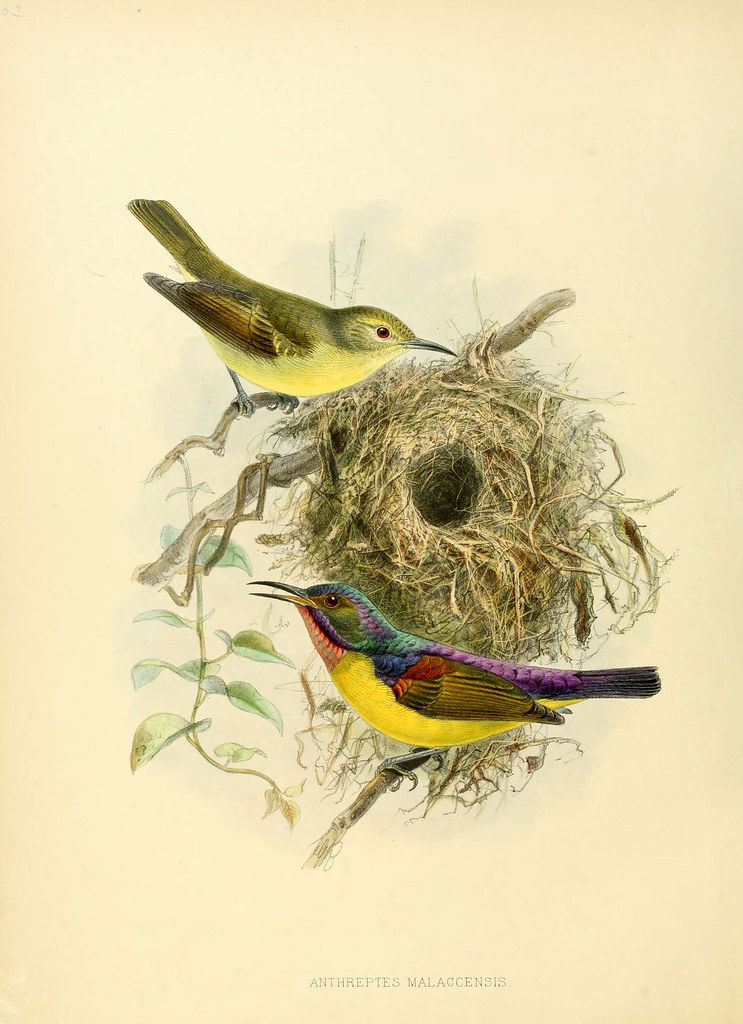
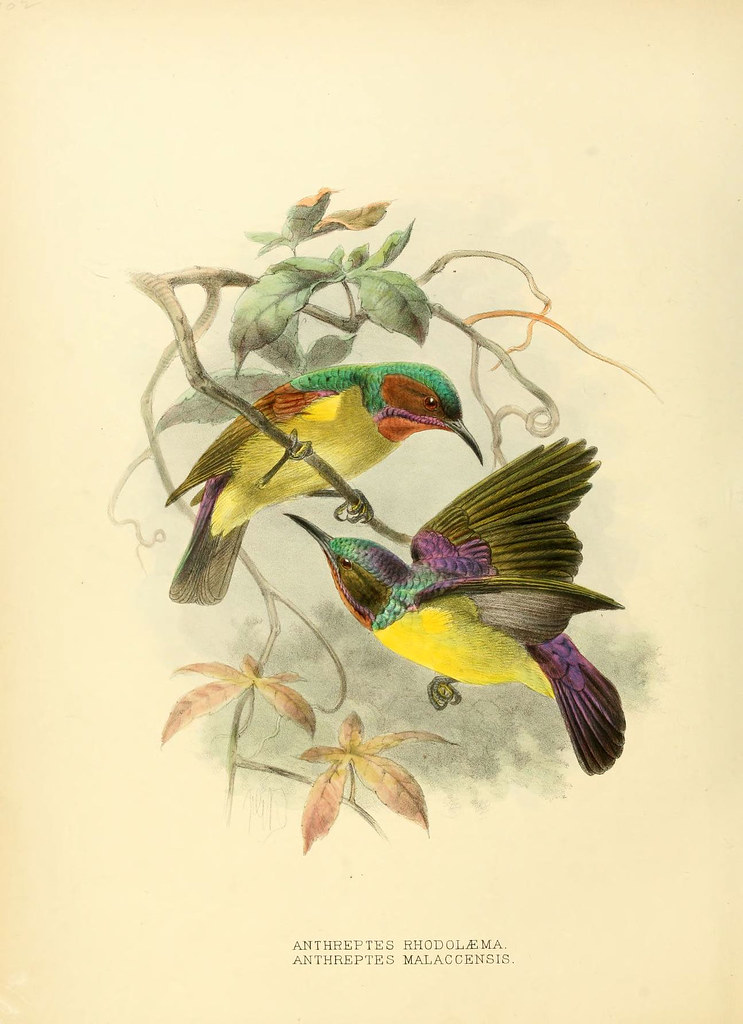



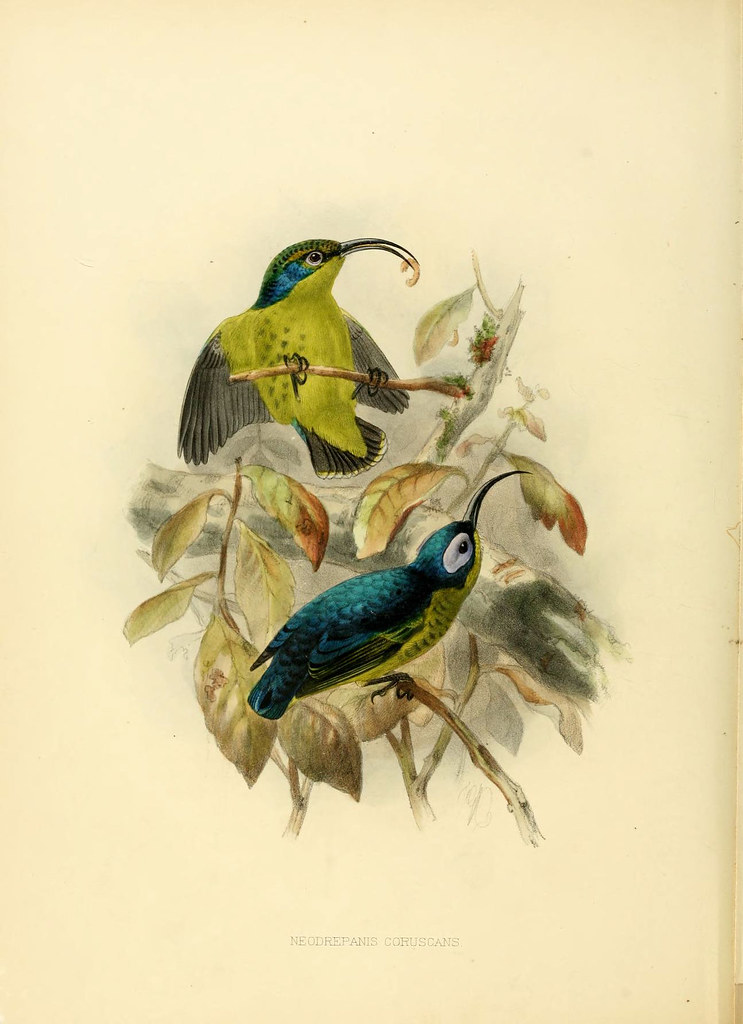
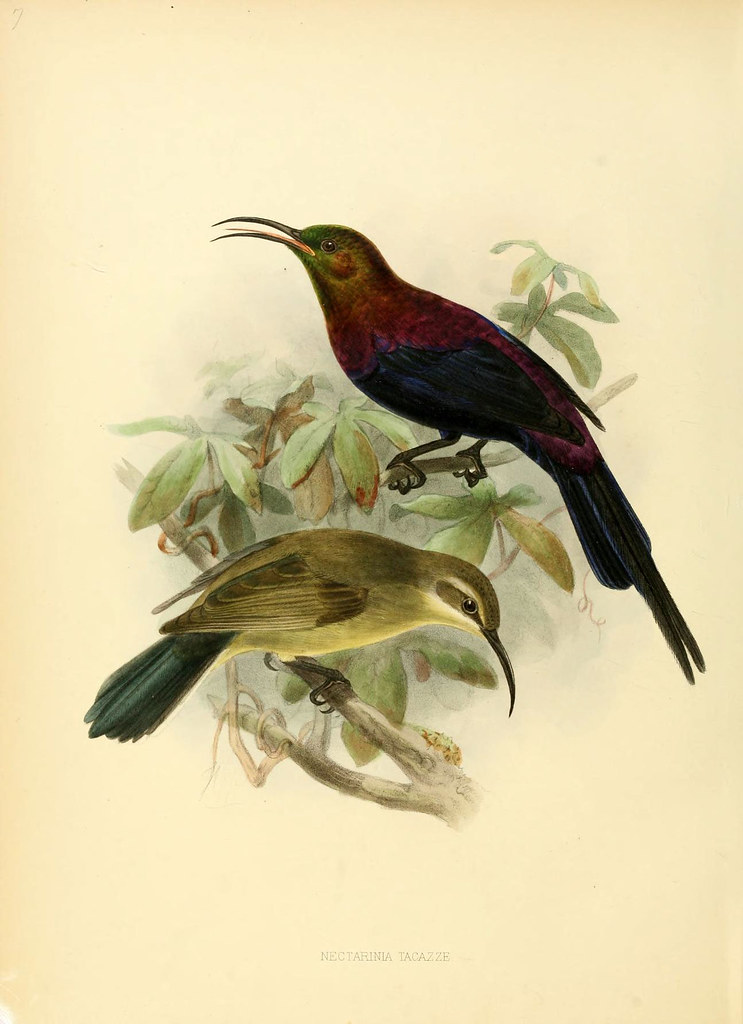

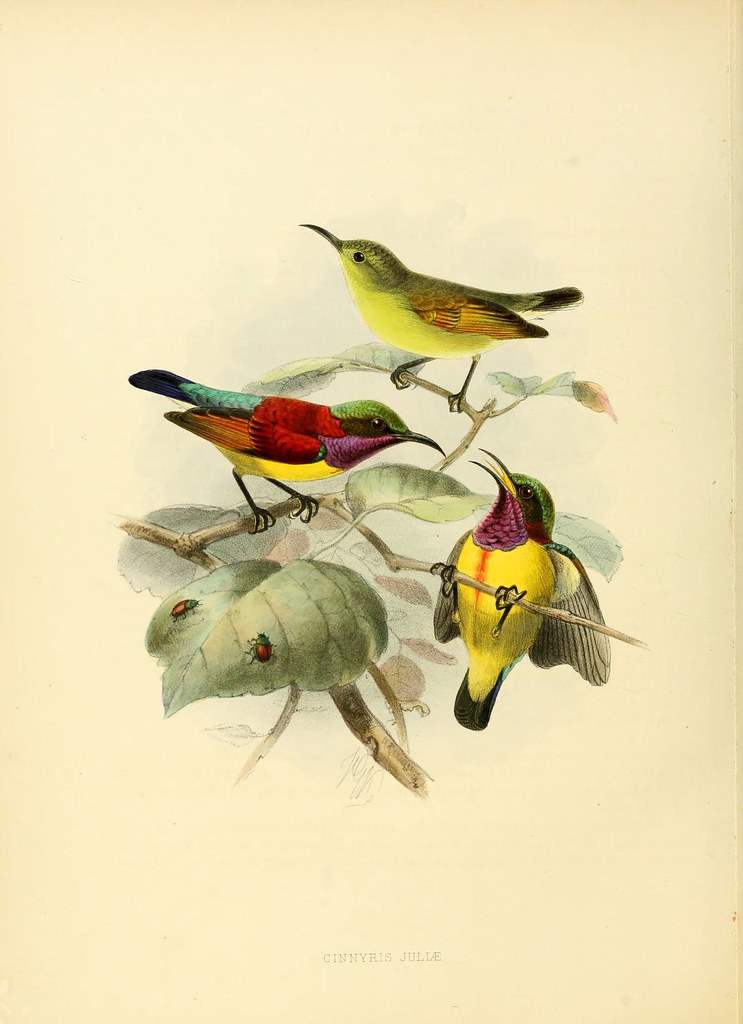
![Exocoetus evolans L [= Exocoetus volitans Linnaeus, 1758]](http://farm8.staticflickr.com/7229/7197011354_ae4b89601c_z.jpg)
![Crayracion hispidus Blkr [= Arothron hispidus (Linnaeus, 1758)]](http://farm8.staticflickr.com/7073/7197014542_28959e877b_z.jpg)
![Duymeria aurigaria Blkr [= Pteragogus aurigarius (Richardson, 1845)]](http://farm8.staticflickr.com/7228/7197012492_e3841fc6bc_z.jpg)
![Platophrys (Platophrys) pavo blkr [= Rhombus pavo Bleeker, 1855]](http://farm8.staticflickr.com/7076/7197011882_7aee1deb05_z.jpg)
![Carrasius auratus [Carrasius auratus (Linnaeus, 1758)]](http://farm8.staticflickr.com/7237/7197011048_03357f83ce_z.jpg)
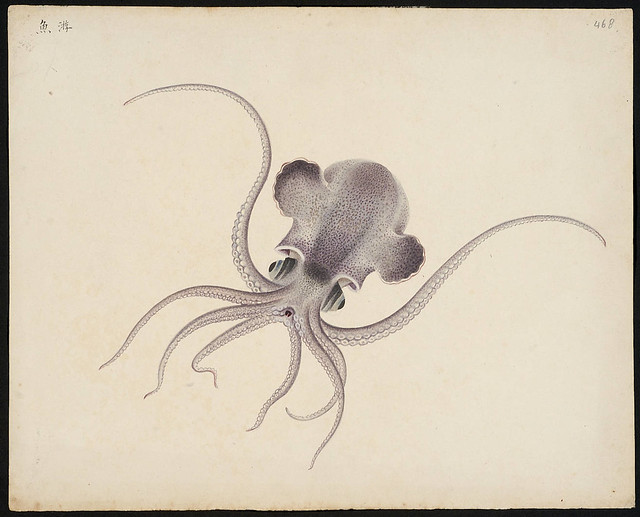
![Uranoscopus asper Schl [Uranoscopus asper Temminck & Schlegel, 1843]](http://farm6.staticflickr.com/5152/7197014314_87c606551e_z.jpg)
![Hemipteronotus pentadactylus (punctulatus) [= Novacula pentadactylus Valenciennes in C&V, 1840]](http://farm9.staticflickr.com/8009/7197013328_de0a8774b9_z.jpg)
![Mastacembelus fasciatus [= Ablennes hians (Valenciennes, 1846)]](http://farm8.staticflickr.com/7234/7197012788_02b7e774f1_z.jpg)
![Blennius ocellaris L. [qstnmrk] [Blennius ocellaris Linnaeus, 1758]](http://farm8.staticflickr.com/7216/7197013080_097ace0e8d_z.jpg)
![Tetraodon ocellatus Osb [Tetraodon ocellatus Linnaeus, 1758] (= bimaculatus Rich.) [Tetraodon bimaculatus Richardson, 1845]](http://farm8.staticflickr.com/7225/7197013570_e610262ecc_z.jpg)
![Uranoscopus guttatus Cuv[qstnmrk] [Uranoscopus guttatus Cuvier in C&V, 1829] fig. artificialis](http://farm8.staticflickr.com/7103/7197012166_d428c492d6_z.jpg)
![Antennarius marmoratus Gunth [Chironectes marmoratus Lesson (ex Cuvier), 1831]](http://farm9.staticflickr.com/8159/7197011610_0279e6826c_z.jpg)
![Pseudoscarus pyrrostethus Blkr [= Scarus ghobban Forsskål, 1775]](http://farm9.staticflickr.com/8003/7197013864_4da6fd1ab3_z.jpg)
![Trichidion [vrgtkn][vrgtkn] fasciatum Blkr [unknown name]](http://farm9.staticflickr.com/8167/7197010766_7e6f2dc762_z.jpg)
